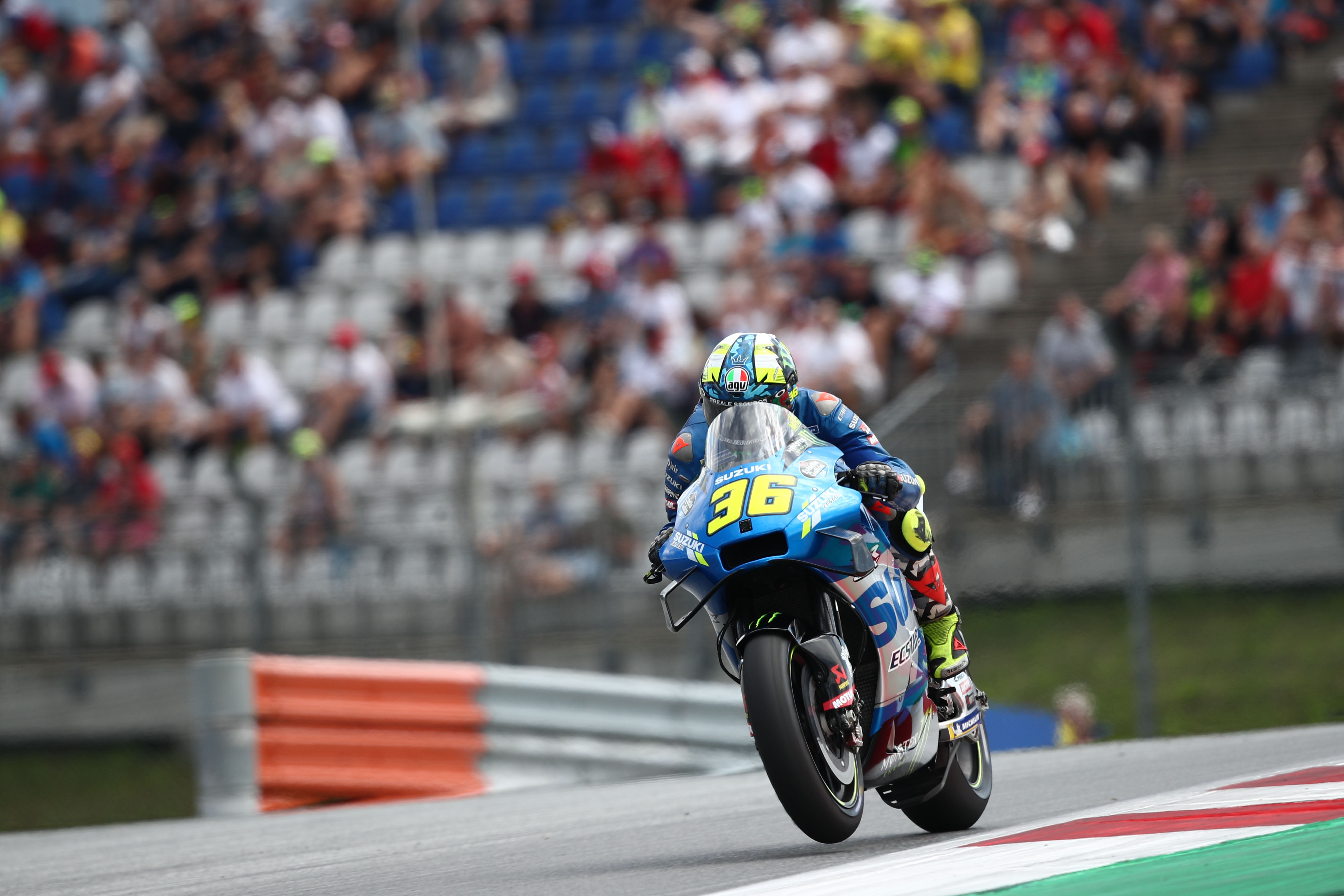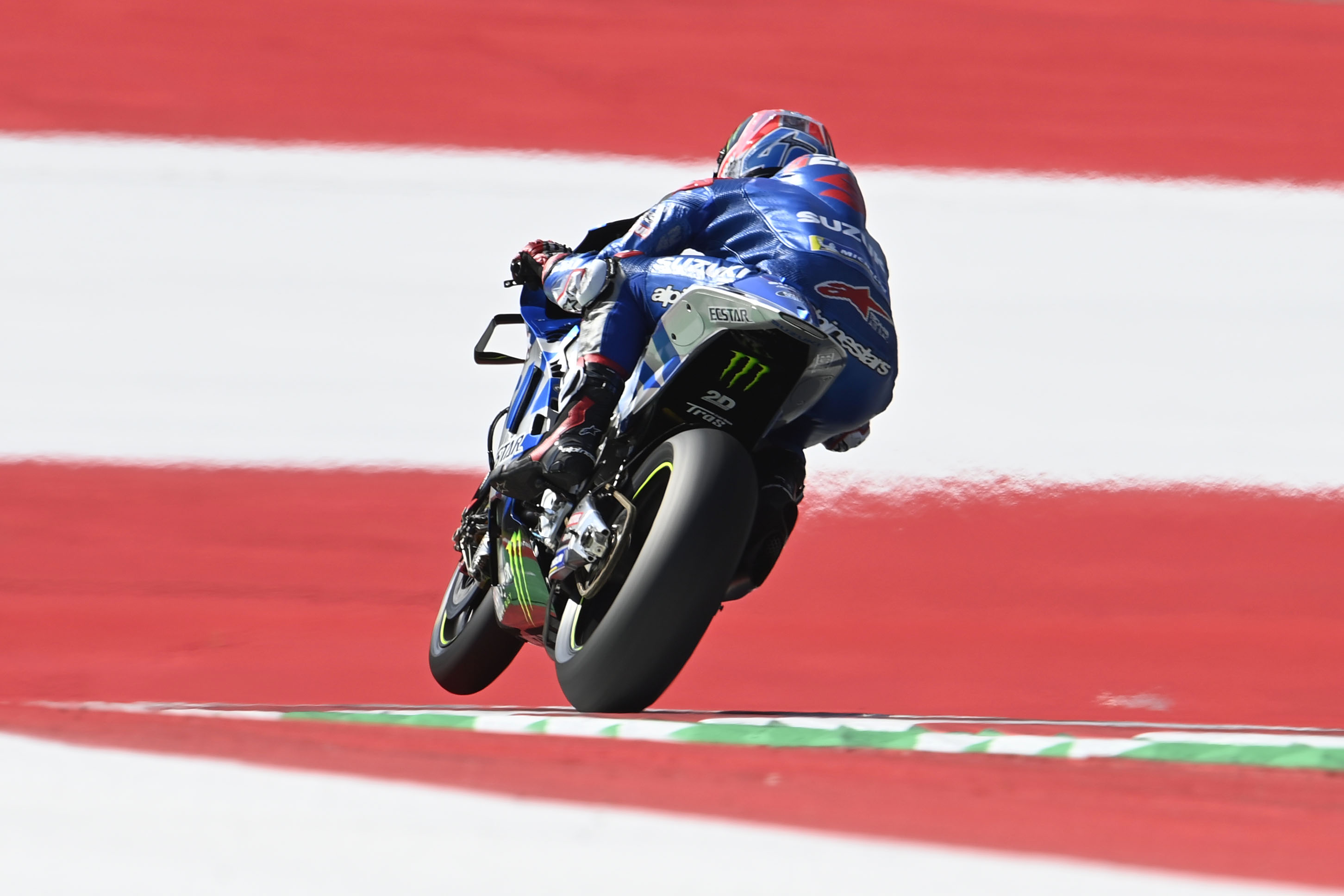Suzuki has finally debuted its fabled ride height adjustment device during today’s second day of action at the Styrian Grand Prix – and used it to make an immediate impact on proceedings, as defending world champion Joan Mir matched the second-best qualifying position of his MotoGP career to line up fifth for tomorrow’s race.
Something practically demanded by its riders as a required upgrade over the five-week summer break as it sought to close the technical arms race to its rivals.
Ducati pioneered the device that locks the suspension to control the rear ride height, meaning power isn’t wasted compressing the fork, at the end of the 2018 season. While it was first used on front suspension to assist race starts, it later became used at the rear of the bike to aid power delivery on corner exits.
The Hamamatsu manufacturer is the last on the grid to field one of the devices, with two arriving only today for both Mir and Alex Rins to trial during practice three this morning.
Predicted by Rins to be worth as much as a few tenths a lap during qualifying, it seems that so far it has delivered on expectations, too, with Mir ending up 0.328s from pole man Jorge Martin – a performance that ranks as a good result given his historic issue with qualifying on a Saturday afternoon.
And despite still needing time to refine both the bike and his riding technique to suit the suspension lock-out device, Mir was left pleased with the way in which it has helped the team to close down the gap to some of its rivals.
“To be the first prototype I’m quite happy,” he explained. “I’m also happy that in a short time Suzuki were able to do it. When you try it for the first time, it’s difficult because there’s a lever you have to push in certain corners and it’s not automatic in your mind. The first exit in FP3 was strange.

“But straight away you feel that with the device you have more acceleration. Of course, it’s the first evolution and there are different areas where you can improve, but I’m quite happy and I was able to make a lot of laps with it. I was able to understand the correct place to use it, which the other riders already know perfectly. Today was an important day for me.
”For tomorrow, I don’t know if we’ll use it – it depends on conditions,” he admitted, referencing the predicted heavy rain due at race time, “but if it’s normal conditions we’ll continue to use it and get some important information. I expect that on the start it’ll also be better, because everyone has improved their starts with this device too.”
On the other side of the Suzuki garage, Mir’s team-mate Alex Rins sounded less enthusiastic about his successes on the opening day after qualifying in 13th place. Struggling slightly more during practice and qualifying as a result of testing the ride height device extensively, he says that it means they’re going into race day with something of an unknown.
“I feel a bit frustrated with the result,” admitted Rins, “because we were out of Q2 by 0.038s, which is nothing. But that’s life, and we’ll start P13 tomorrow. We don’t know our real pace, though, because we focused on the rear device and we did a lot of changes between the bike with the device and the other without it, to be sure that it’s working well and that we don’t have for example more degradation on the tyre.

“I think that this isn’t the best track to try it, because you’ve got three very hard braking points and with the rear device when you need to brake, you feel the rear moving. If you lose the braking point reference, it’s easy to go long in the corner and to lose all the time, to lose the lap.
“It isn’t easy to learn to use it, but I feel like I’m opening the throttle in a good way with it. We’ve seen when the other riders use it, though, and that gives us a bit of an idea.
“If tomorrow is a dry race then for sure we’ll use it. On the data we see a difference in terms of acceleration.
“It looks like there’s a 90% chance we’ll have the race underwater, but if it’s raining in warmup we’ll try it because we don’t want to try it directly without a test. If it’s raining for the race and we can’t try it in the warmup in the wet, we won’t start with it.”





